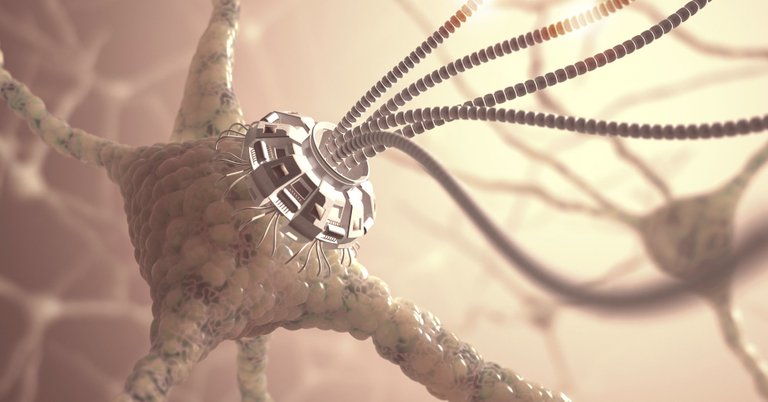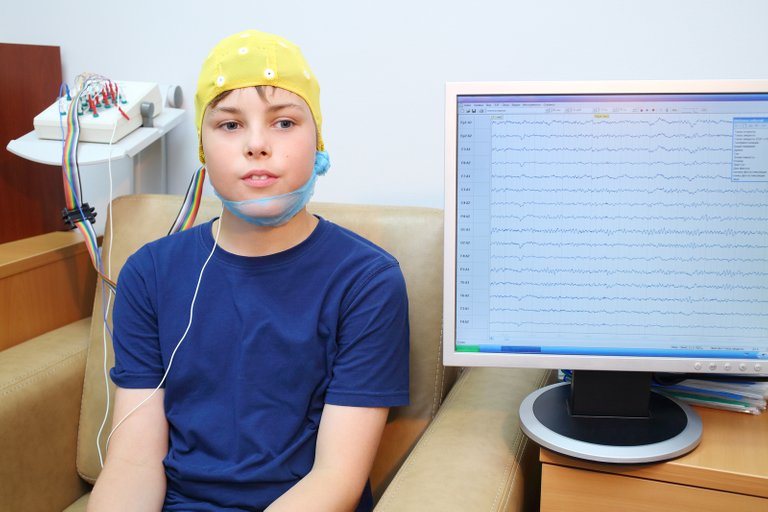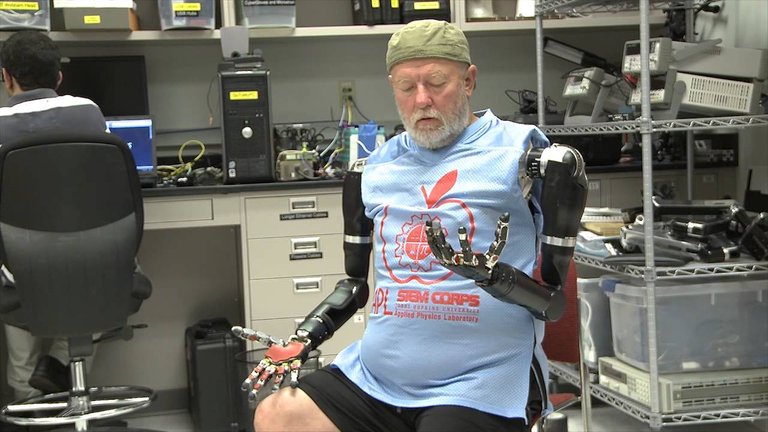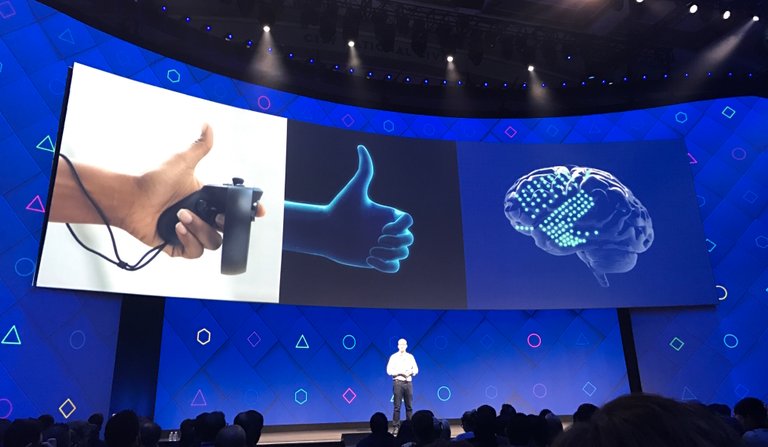
Introduction
In this 3-part series, my goal is to a) give you a brief introduction on Brain-Computer Interfaces and cover the current, and very promising, commercial developments in the field (Part 1), b) excite as well as trouble you with a (not so) futuristic prediction, from the world's most reliable technologist, about what the world may look like in 15 years' time in relation to BCIs (Part 2) and c) talk about a Blockchain-based Decentralized CloudMind, or in other words, the most highly prudent, functional and secure way humanity could transition to a world of having our minds connected to each other and the Cloud (Part 3). Buckle up!
So what is a Brain-Computer Interface?
A Brain Computer Interface (BCI) or Brain Machine Interface (BMI) broadly represents any collaboration betwen the human brain and an external device. BCIs have numerous definitions, but the most common elements found amongst all the definitions are as follows:
- They come in the form of a combination of hardware and software.
- The hardware system acquires signals from the brain and can also relay them to an external device.
- The software component of the system records and analyzes (encodes and decodes) these signals.
- The software translates these signals into commands and then sends them to either an external device (like a prosthetic limb or even a VR/AR system) or the brain to execute purpose-specific actions.
Developments in BCIs have thus far taken place predominantly in the realms of research and clinical trials to aid people with medical conditions (from amputees and people with paralysis to patients suffering from Alzheimer's, Parkinson's or epilepsy), but have been gaining strong momentum for commercial purposes (brain enhancement/augmentation). Initiatives in BCIs can be broadly grouped into three categories, depending on their purpose: neurofeedback, device interaction and brain enhancement.
1. Neurofeedback

Or commonly EEG (electroencephalography) biofeedback, this approach involves the use of medical apparatus for the monitoring of brain activity and intensity (for instance during sleep, in patients with certain conditions or when doing a certain action) for researchers to learn more about the brain and proceed with proper interventions. This is pretty standard (since the first human EEG was recorded by Hans Berger in 1924) and has been one of the best sources of knowledge for mapping the brain and understanding its activity. Coupled with individuals using AR/VR products, the innovations in the field could provide some exceptional new insights.
2. Device Interaction

This is the next step, where BCIs allow individuals to control external devices using their thoughts. Again starting from the medical sphere, mapping of brain activity and correlating it to certain motor functions is already aiding patients with disabilities or neurological disorders. The field of neuroscience here is "neuroprosthetics" and describes the use of electronic device implants to replace the function of impaired nervous systems or sensory organs. In fact, they have been around for a while — the first cochlear implant was implanted in 1957 to help deaf individuals hear — and since then, over 350,000 such devices have been implanted throughout the world. There is also extensive research and medical development helping amputees control prosthetic limbs with just their mind. And surprise surprise, you can even steer a drone (!) with just your thoughts, and there are even such races! (check out http://braindronerace.com/). This is a very promising field, and in the future people will be able to control virtually every device in their surroundings with just their mind.
3. Brain Enhancement
This is where things are getting really sci-fi. From enhancing the brain's ability to learn, increasing intelligence and memory retention or healing the brain through re-establishing and strengthening synaptic connections and transmission, this application of BCIs promises not to just help patients suffering from brain injury (for instance clinical trials conducted by a company called NeuroLutions have shown that it can trigger the creation of synaptic connections in the brain as a medical intervention to patients disabled by stroke), but can also make us super-human (remember the movie Limitless?). And this is just the beginning.
For the truly futuristic (or not so?) take on this, make sure to check the second part of this series (up later today!)!
Companies developing commercial BCI products
So let's check out 12 amazing startups + an open-source movement in the field of BCIs, just to get a glimpse of what's ahead. Most (but not all) companies are starting with products to treat patients suffering from certain brain-related conditions and aim to expand into brain enhancement.
Facebook (yes, you read that right!)

In the most recent F8 conference, Facebook revealed it has assembled a team of over 60 engineers working over the last 7 months on creating a BCI that will let you type with just your mind without invasive implants (goal is to type x5 faster on a smartphone, at ~100 words per minute). The team, stationed at Facebook's mysterious Building 8 (B8) and led by Regina Dugan, a previous DARPA (!) executive, plans to use optical imaging to scan the brain a hundred times per second to detect a user speaking silently in his head, and translate the thoughts into text. Building 8 is is collaborating with UC San Francisco, UC Berkeley, Johns Hopkins Medicine, Johns Hopkins University’s Applied Physics Laboratory and Washington University School of Medicine in St. Louis. Additionally, researchers who specialize in machine learning for decoding speech and language, building optical neuroimaging systems with advanced spatial resolution and next-generation neural prosthetics are involved. Facebook's ultimate goal for its BCI is to let people control AR and VR experiences with their mind instead of a screen or controller. That's waaay too much power and information gathered by Facebook folks. *Check out the 3rd post of the series for the most responsible way to go about having advanced connected BCIs (hint: it's the blockchain).
Major key: This has actually been done before. At the European Research and Innovation Exhibition in Paris in June 2006, American scientist Peter Brunner composed a message simply by concentrating on a display. Brunner wore a close-fitting, yet completely external, cap fitted with a number of EEG electrodes. Brunner's brain activity was picked up by the cap's electrodes and software decoded the information, leading to commands identifying specific letters on the display and hence the message being composed. The Brunner BCI demonstrated in Paris in June 2006 is based on a method called the Wadsworth system. Like other EEG-based BCI technologies, the Wadsworth system uses adaptive learning algorithms and pattern recognition to facilitate the communication. Both the user and the software are expected to adapt and learn while using the system, with the process becoming more efficient with practice (think of auto-complete while you're texting, but better).
Neuralink
Of course the list includes yet another ambitious venture from Elon Musk himself. As with most companies active in this field, Neuralink is also in the research stage and there's limited information available. What we know is it plans to initially create BCIs or 'neural laces' to help patients suffering from medical conditions, but eventually will move into commercial neural laces for brain enhancement. Musk, being a strong advocate for the prudent use of AI (see OpenAI movement) and someone who has repeatedly cautioned against humanity being turned into AI's "house cat" in the distant future, hopes to bring about a more sustainable symbiosis between humans and AI by allowing people to 'plug-in' their minds into the cloud and merge with AI. If you can't beat it, join it!
Kernel
Short story: Kernel is targeting the hippocampus, the brain's region which decodes our long term memories (especially spatial and emotion-related memories, like the amygdala). It's like short-term RAM going to long-term memory in the brain's hard drive. They are creating AI to “read” what information the hippocampus is creating and storing, and then "write" it on a chip for storage, accessing and even modification. They are at 80% accuracy!
Long story: Kernel was founded by Bryan Johnson, an 39 year old man who exemplifies the American entrepreneurial success story. Johnson created the famous payment processing company Braintree, which he sold to eBay for $800 million in 2013. He then took some of his proceeds and founded a VC fund called OS Funds. “OS” stands for “operating system” and OS Funds then set out to invest in “entrepreneurs who are working towards quantum-leap discoveries that promise to reinvent the operating systems of life“. OS Funds has invested in ambitious startups like artificial intelligence pioneer Vicarious, drone delivery startup Matternet, nanobot factory Ginkgo Bioworks, and Human Longevity which wants to extend the lifespan of humans. Johnson then went on to sink $100 million into his new startup Kernel, whose motto is effectively to understand and manipulate the 'neural code' - much like scientists are making breakthroughs editing the 'gene code' with recent groundbreaking techniques like CRISPR/Cas9.
Mindmaze
Founded in 2012, MindMaze is a Swiss company building a platform that combines VR, brain imaging, computer graphics, and neuroscience. Mindmaze has taken in two rounds of funding totaling $108.5 million so far. They have developed a user interface integrated into a wearable Head Mount Display (HMD) and 3D motion-capture cameras to create a VR and AR environment for patients with neurological disorders. Their system intends to provide multi-sensory feedback to patients with brain injuries in order to re-stimulate motor functions during rehabilitation. It is the first thought-powered VR/AR and motion-capture game system. Basically it is like being in a simulation, but you are controlling the outcome with your thoughts!
Neuropace
Founded in 1997 in Mountain View, California startup NeuroPace has taken in three rounds of funding totaling $67 million. It is developing a medical device that identifies unusual brain activity and then sends a pulse to counteract or disrupt the unusual signs marking the onset of an epileptic seizure. Just like all neurological disorders, the onset of an epileptic seizure has a specific brainwave signature that can be isolated and identified. The NeuroPace device is known as the RNS System and it functions much like a pacemaker for epilepsy.
Cerêve
Founded in 2008, Pittsburgh based Cerêve has taken in $38 million to develop a device that helps people with sleep disorders or insomnia (an estimated 50-70 million people in just the US alone suffer from chronic sleep disorders). The US Food and Drug Administration (FDA) granted commercial clearance for Cerêve(™) Sleep System as a prescription device, which hints to the product hitting the shelves very soon! “A better night’s sleep is just around the corner” as the company puts it.
InteraXon
Do you meditate? This company is reducing the focus and years of practice meditation requires into a simple plug-and-play routine. The product is called Muse. Founded in 2007, InteraXon has taken in a total of $17.2 million in funding so far from investors that include Ashton Kutcher (the Two and a Half Men star, who was actually also an early investor AirBnB, Uber, and Spotify). InteraXon’s Muse is a brain-sensing headband that helps users to elevate meditation through real-time audio feedback.
Rythm
Founded in 2014, San Francisco startup Rythm has taken in an $11 million seed funding round. The company’s product “Dreem” is a headband that recognizes deep sleep patterns and introduces auditory or sound stimulation to keep you there and enhance the quality of your sleep. A good night sleep apparently restores energy at the cellular level, increases our brain’s ability to learn and retain information, releases hormones responsible for growth and metabolism, and slows down degenerative disorders like Alzheimer’s disease. Rythm is currently offering “Dreem” for $349 to the first 500 customers. Sounds like these guys are solving some serious first world problems.
BrainCo
Founded in 2015, BrainCo has taken in $5.9 million in funding so far with the aim of improving attention spans in order to help those with focus issues and learning difficulties through wearables BCIs and neurofeedback training. BrainCo’s offering includes an integrated classroom system that uses their headbands to see what’s happening inside a student’s brain while in class. Teachers get feedback when the attention of students is wandering around or if students are simply bored. Let's hope initiatives like this will reduce the hysterical use of ADHD-treating drugs like Adderal and Ritalin, which are slowly turning kids into zombies, severely disturbing their brain's neurochemical balance, leading them to anti-depressants like SSRIs and heavier drug use in later life.
BrainRobotics
The founder of BrainCo also took in $5 million to found BrainRobotics in 2015 which plans to provide an affordable solution for arm amputees to use customized robotic prosthetics that are controlled with the mind for a price point under $3,000. The limbs are controlled by the same myoelectric signals sent by the brain to the muscles through using EEG.
NeuroLutions
Founded in 2007, Missouri based NeuroLutions has taken in a total of $2.15 million in funding to develop a revolutionary platform using Brain Computer Interface (BCI) technology to restore functions to paralyzed limbs. NeuroLutions has developed a robotic exoskeleton they call IpsiHand. The use of the IpsiHand causes the brain to send signals to the limb immobilized by a stroke. This continuous firing of brain signals eventually establishes new synaptic connections restoring function to the affected side of the body.
Neurable
Founded in 2015, Cambridge, Massachusetts startup Neurable just received its first round of funding in the amount of $2 million. Neurable is working on using brain activity to operate devices like toys or even cars. Neurable’s brain-computer interface uses electroencephalography (EEG) to record brain activity, analyze data and provide users with full three-dimensional control in real time. This will enable things like hands-free control of menus and game options in AR avoiding the limitations of existing technologies like voice commands and eye-tracking because it uses the power of the user’s brain. The best thing of all is no wires! Neurable is targeting manufacturers of AR/VR headsets and content developers with its software development kit (SDK) already made compatible for Oculus Rift, Microsoft HoloLens, HTC Vive, and other leading AR/VR headset brands. The SDK will be released to select developers in the second half of this year.
AND, last but not least, we have:
OpenBCI – Brain-Computer Interface Tech for the Masses
You can sit out the next few years and read about the breakthroughs as they happen, waiting your turn to plug into the Matrix. Or, starting for as little as $199, you can buy the electronics to conduct your own bio-sensing and biofeedback experiments thanks to Brooklyn-based startup OpenBCI (electrodes and cables sold separately). The company offers a low-cost, programmable, open-source bio-sensing platform that allows anyone with a computer to access their brain waves (EEG) and other bio-rhythms such as heart (ECG) and skeletal muscles (EMG) for fun and profit.
The Community Page on the OpenBCI website is filled with awesome projects that members share. A team in Hong Kong used brainwaves to help those with disabilities to manipulate a mobile phone using only their minds and a specially built app. A project called WAVR claims to apply neuro controls through OpenBCI hardware to send commands to a virtual reality application. Looks like they even spent the $349.99 for the 3D-printed headset. And then there’s the more … artistic uses of brainwaves, with some users even creating music using their mind. You could check out the OpenBCI shop for a complete list of its hardware and accessories.
Are you fascinated yet??
Make sure to check out the next two parts of the series (both to be posted in the next 12 hours), Part 2 giving you a glimpse intio what the 2030s may look like with the advent of advanced inter-connected BCIs, and Part 3 discussing the creation of a BCI network on the blockchain - a decentalized CloudMind! (You wouldn't want Facebook creating that, would you? Well how about Steemit-based avatars in a BCI-powered virtual world?! ;) Check out part 3!)
Did you like this post?
You can check out my Introduceyourself post -----> here <-----
I'm a new Steemian and would appreciate everyone's feedback and friendship :)
***
Image Sources:
Picture 1 , Picture 2 , Picture 3 , Picture 4
References and additional reading:
http://whatis.techtarget.com/definition/brain-computer-interface-BCI
https://techcrunch.com/2017/04/19/facebook-brain-interface/
http://www.nanalyze.com/2017/02/brain-computer-interfaces-10-startups/
http://www.nanalyze.com/2017/01/brain-computer-interface/
http://www.nanalyze.com/2017/04/openbci-brain-computer-interface/
http://www.nanalyze.com/2016/11/brain-implants-ai-kernel/
***
If you liked this piece please Upvote, Resteem and Follow me at @irf1 :)
Incredible post irf1. This is an exciting area for technology and humans. This type of technology could radically transform the way we live and interact. Im excited by these types of technological advances. Onto part 2 & 3 i go.
Thanks a lot @green8 !! :) I am definitely as excited as you are!! :D
Amazing post !
I'm personally waiting for a non-centralized cloudmind to join as soon as possible :)
I'm gonna be an early adopter with you! :D
Damn, what an article! Great read, thanks!
Thanks so much @inity ! Appreciate it fam :) Make sure to check out Part 2, posted just now!
Amazing read! Thanks for the article. Worth Resteeming. =)
Thank you @n4talie !! Really appreciate it, glad you liked it :) :)
Awesome post! I can't wait for neural laces to become a thing! The way we live is going to be to change dramaticly. We could eventully have the ability to do telapathy and even know instantly all the knowledge we have stored on the internet.
nice....your post deserve upvote and resteem....
Thank you so much @lautenglye ! I appreciate it a lot :) I just posted the final Part 3 of the series if you wanna check it out!
sure...keep it up...